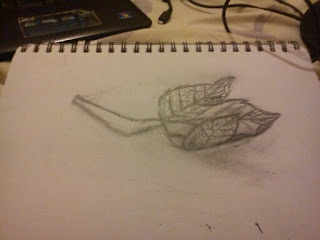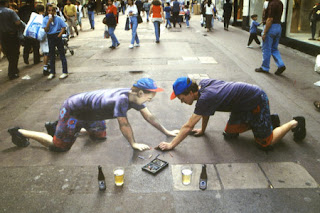Modern philosopher Stephen Law writes "we are prisoners within our own minds", this may be considered true according to platonic philosophy which suggests that what we experience is a shadow of what exists on the peripheral. This point of view has been criticised by many although it has been found, through psychological studies, that our perception of 'reality' is influenced by what we have learned therefore suggesting that there may be a truth beyond what is merely superficial. I will be investigating such philosophical premises and how they have been represented through art.
Many believe that we perceive reality purely through sense experience; however there have been many occasions were we have been deceived by our senses. For example, the way we perceive colour is dependent upon it’s context.
The image on the right is an effective example of how human perception is easily manipulated, it is apparent that squares ‘A’ and ‘B’ are different shades of grey, however this is not the case. In fact the shadow that is cast over square ‘B’ gives the impression that it is different. If one were to remove the shadow or alter the context of the colours they would see that square ‘A’ and ‘B’ are exactly the same. The reason for this being the human brain is interpreting the environment all the time, by trying to make sense of random bits of information, this makes our perceptions unreliable.
Our previous experiences also shape our judgement of the environment, this is something psychologists call ‘projection’ – we project our thoughts onto our environment thus causing the illusion ourselves. From an early age we are conditioned to have certain beliefs, or ideas, about how our environment should be perceived and how we should perceive ourselves. These ideas vary from person to person; from culture to culture therefore there is no objective reality showing that we are all experiencing an illusion, to some extent, however we may not all experience the same illusion!























.JPG)
.JPG)

.JPG)
